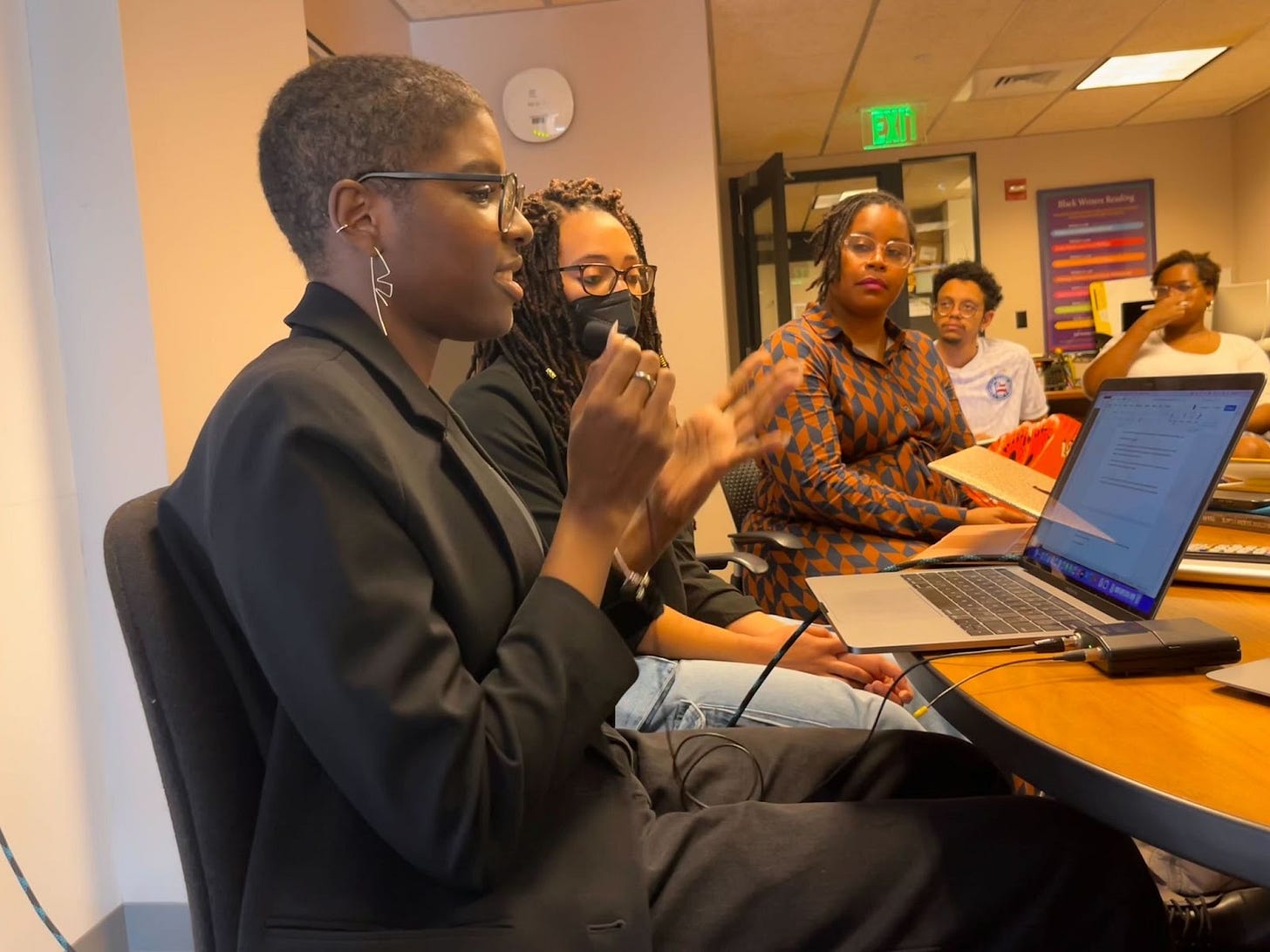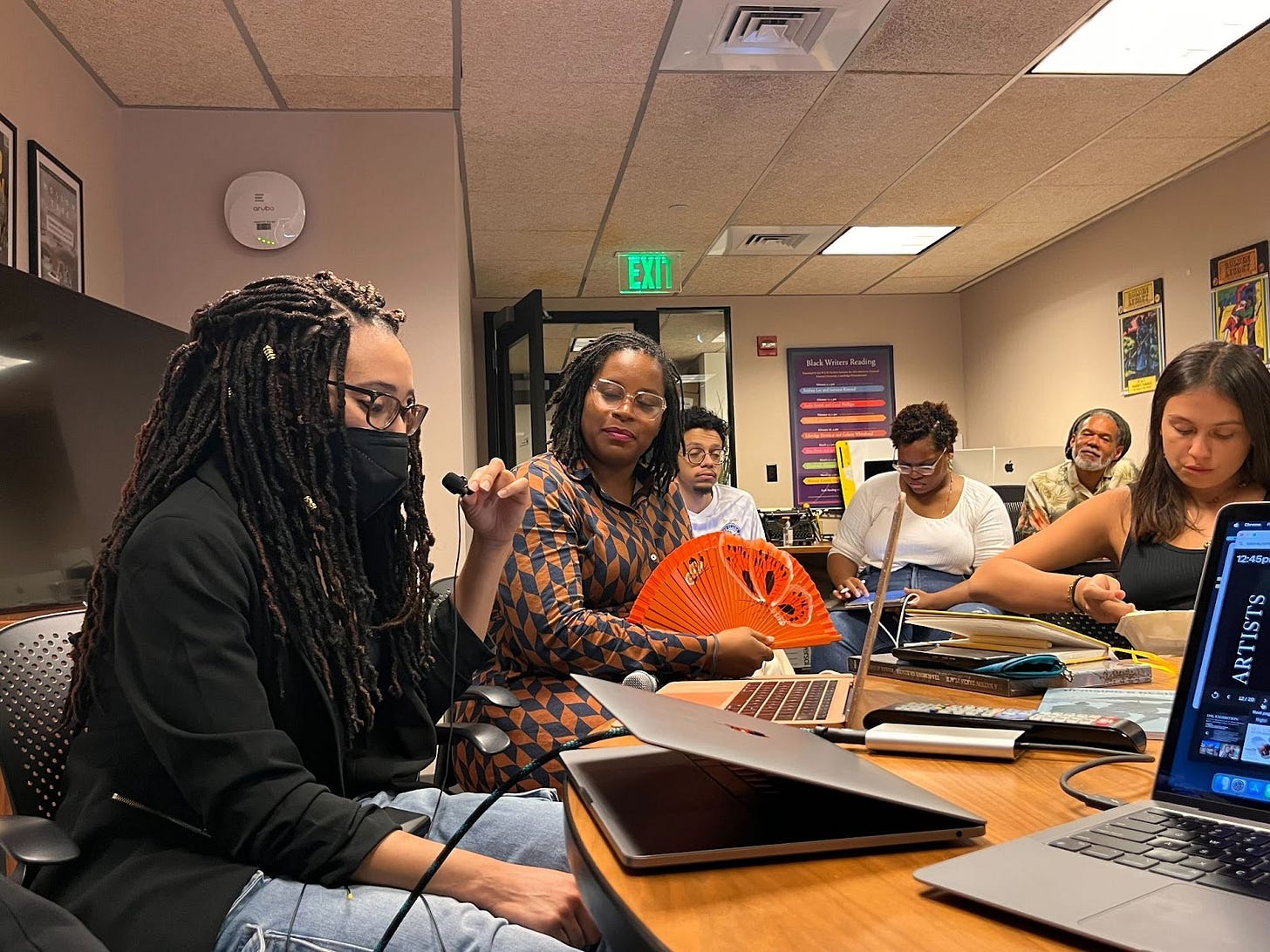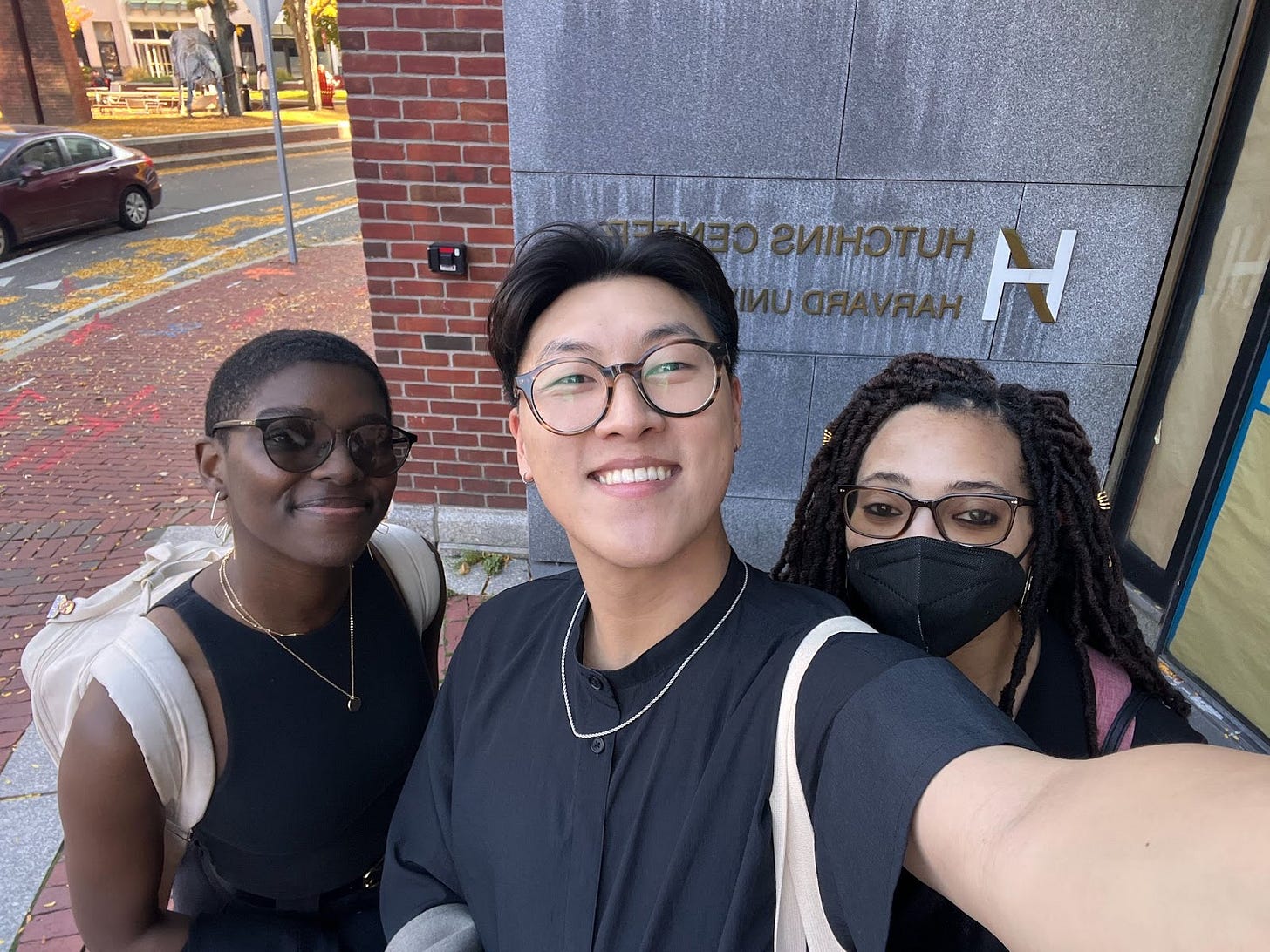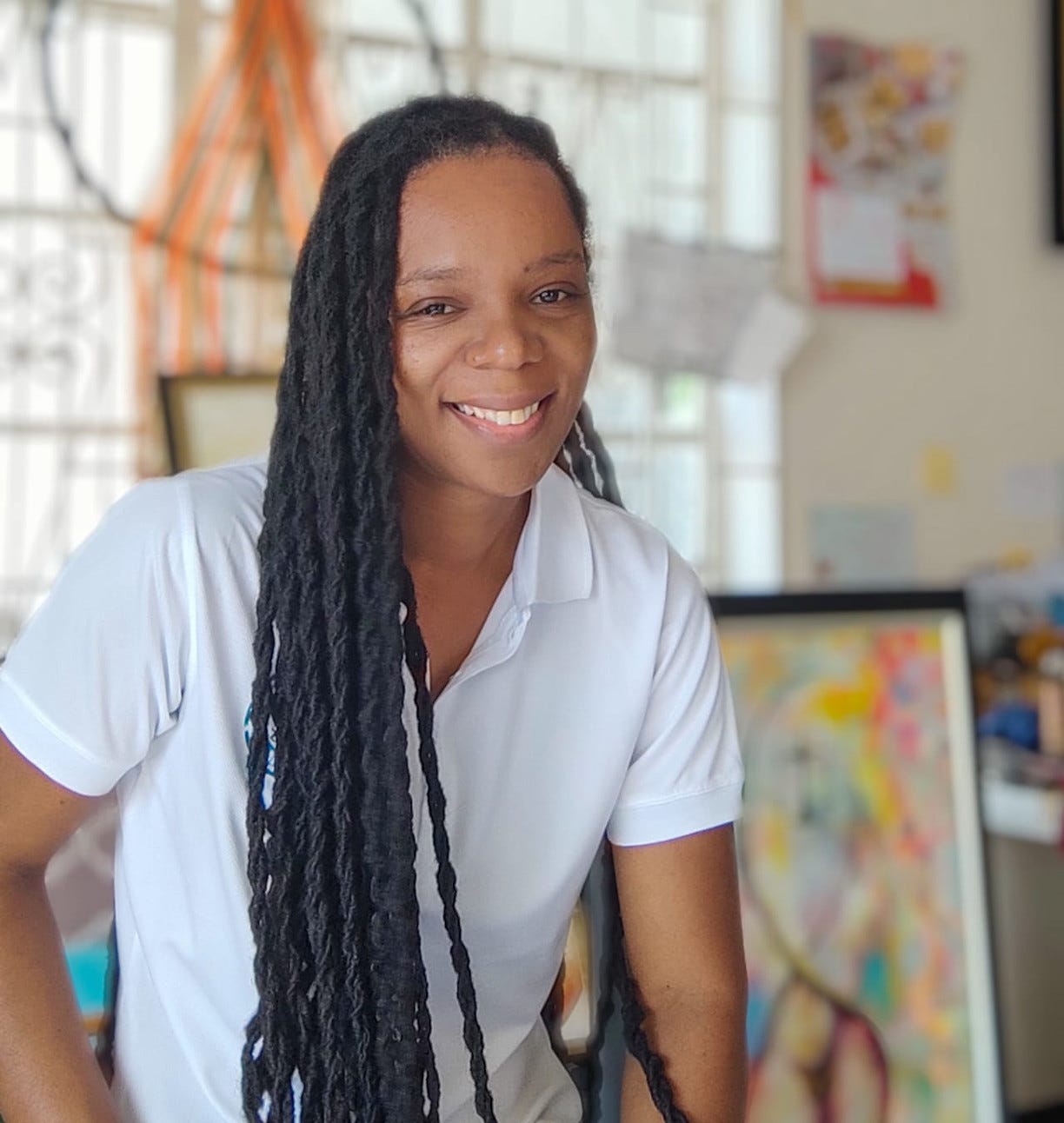Remains // An Archive at Harvard's History Design Studio!
Read about the Remains team's presentation at the History Design Studio at the invitation of Professor Vincent Brown, and all about their new art exhibit, soon to be available on display in Baltimore!

Congratulations to Remains // An Archive, who presented their work at the History Design Studio, an innovative workshop and course at Harvard University, on Wednesday, October 23 at the invitation of Professor Vincent Brown! The Remains team met Dr. Brown at the Who Owns Black Data Symposium at JHU in March 2024, where they presented the Slavery in Motion Project and he presented on the 10 Million Names project. As longtime admirers of Brown’s work, the Remains team members were thrilled to receive an invitation from him shortly afterward to discuss Slavery in Motion, Remains as a micro-lab, and the Diaspora Solidarities Lab at large in his course!
Each of Remains’ three members presented: Jessica Newby, lab co-lead and PhD Candidate at Johns Hopkins University whose work centers enslaved women, family and kinship networks throughout the Black Atlantic during the eighteenth century (her dissertation, Kinship in Motion: Women and Slavery in Eighteenth Century Jamaica was recently awarded a 2024 Mellon ACLS Dissertation Innovation Fellowship); Kevin Ah-Sen, lab co-lead and PhD Candidate in the Faculty of Education at McGill University, whose work explores theories and forms of racial and queer subjectivities, death, grief, and their pedagogical im/possibilities, through Black studies, queer theory, and psychoanalysis (his recently published article “Against capture: notes on recording and the problem of extraction in education research“ is viewable here); and Samantha Stephens, lab Solidarity Fellow and PhD Candidate in English at the University of Virginia whose work focuses on the poetics of erasure, through the intersection of enslavement and technology in the Black Atlantic, considering how enslaved, ancestral, and maroon women glitch the colonial archive (check out her website!).
Stephens spoke about the DSL and three of Remains’ past projects: first, the lab’s work with photographer, educator, and DSL Community Fellow Chris Lopez on fires in Hoboken, New Jersey in the late 1970s and early 1980s (March 2023); second, a live discussion in May 2023 with Dr. Christina Sharpe about her new-at-the-time book Ordinary Notes; and third, the panel “‘The precarious zone between life and death’: Black feminist notes on grief and the public” at the American Studies Association Conference in Montreal in November 2023.
Newby’s presentation focused on the Slavery in Motion project, whose origins lie in her own dissertation research, and she shared how it has evolved as a result of the integration of historical training into her existing training as a Black Studies scholar (see below for more).
Ah-Sen then spoke about Remains’ latest presentation for the Slavery in Motion Project, which was an art exhibit housed at the Avery Center for African-American History and Culture at the College of Charleston. Ah-Sen, who served as a co-curator of the exhibit titled Coastal Relations: Enacting Diaspora with Dr. Mary Pena, discussed its origins, as well as Remains’ next project, which will be a conversation with the artists at the Baltimore Museum of Art about original pieces featuring artists’ interpretations of Molia, a young African woman who appears in Newby’s dissertation research.
One of the things that Newby most appreciated about the History Design Studio visit and presentation was the variety of questions that they received. As a historian, she appreciated being able to connect with students who were both inside and outside of the field. Their insights continued to affirm her commitment to producing scholarship that crosses and traverses disciplinary boundaries in the study of Black life.
More On Slavery in Motion
Molia’s existence is recorded in the Thistlewood Diaries, the infamous journals of Thomas Thistlewood, an 18th century English overseer and enslaver in Jamaica. The Diaries are, according to Newby, “figuratively and literally opaque,” in part because of Thistlewood’s distinctive and challenging-to-read handwriting. Newby also notes that the diaries have a particular structure and specific notation and annotation style that takes some time to become accustomed to. These challenges “intimidated” and even “dejected” her when she first examined them as a Masters student in African American Studies, at first leaving her thinking that only historians could understand them. Furthermore, she was reliant on “traditional” Atlantic historians’ discussions of Molia, which largely centered her relationship with Thistlewood and did not consider who Molia was outside of this enslaver-enslaved relationship.
Newby’s focus - and confidence - changed in her first year as a PhD student at Johns Hopkins University, where she received training on how to engage with primary sources as a historian, while still remaining committed to the use of interdisciplinary research methods. Newby says she owes her growth to the example set by her advisors (Professors Jessica Marie Johnson, Sasha Turner, and Lawrence Jackson) in their own work. A part of why she chose JHU as the place to pursue her PhD was that there were historians there who were willing to consider and incorporate interdisciplinarity in their own work on Black life. This enabled Newby to have a new engagement with Molia as a person, and a new confidence that she could learn and relearn howto work with the Thistlewood Diaries in ways previously untried or unconsidered by other scholars. When she became comfortable reading them, she found a treasure trove of information about Molia that was nowhere to be found in the existing secondary literature. “What I was seeing was a very different picture of a person than how she had been interpreted by other scholars [of many disciplines.] I didn’t see anyone else who was seeing her the way I did.” Newby identified a few positionalities that she thought were important to bring to historical discussions of Molia , which became the basis for her first year paper project at JHU and opened the door to her wanting to “sit within the archive.” Even after the completion of the project, “I didn’t want to walk away from it,” she says.
Understanding Molia
The first positionality that Newby identified as important for Molia was who Molia was as an African. For instance, although her “country name” (the name that was recorded as belonging to her in her homeland before her enslavers renamed her) is provided in the diary, authors of secondary scholarship have ignored it and in their discussions of her life, have used the slave name that Thistlewood gave her at the time of her purchase.
Second, Molia was a mother. She had one daughter named Silvia, who was forcibly separated from her when she was 15 months old. Silvia became sick and died a few weeks after their separation. Despite enduring repeated sexual violence after Silvia’s death, Molia would never have any more children. And almost a year to the day of the anniversary of her daughter’s death, Molia ran away. She ran away 13 more times over the next six years. She stayed missing for nearly a month on her 14th escape, the longest time she managed to stay hidden. Following this fourteenth recapture, Thistlewood sold her to a trader who took her away from Jamaica altogether and to Savannah, Georgia.
Newby also considers Molia’s positionality as a fieldhand, which allowed her to frequently be in motion, to be critical. Newby notes that there can be a perception of slavery as a system that kept people still, but as a fieldhand, Malia was often contracted throughout the parish of Westmoreland to perform field labor, road building and maintenance projects. Newby argues that Molia’s forced motion was an important precursor to her voluntary motion in which she ran away and stayed hidden for extended periods of time in the Jamaican wilderness.
Newby argues that examining these three positionalities shows not just how slavery functioned for women enslaved in Jamaica, but also shows how they contested slavery’s spatial, and social and political boundaries. She emphasizes that we can learn just as much, if not more, about how slavery functioned for enslaved women and how they survived and contested its boundaries by decentering the relationships between enslavers and enslaved people and instead centering the relationships enslaved people had with each other. Newby centers Molia’s relationship with her daughter rather than her relationship with Thistlewood, helping us see her in a new way. This relationship was also one of the aspects of Molia’s life that the artists of the Slavery in Motion exhibit gravitated towards the most.
The Slavery in Motion Exhibit
The exhibit–featuring originally commissioned works by artists Romaine McNeil (Kingston, Jamaica), Tatiana Esh (Brooklyn, NY), Julia Mallory (Harrisburg, PA) and Sha-Shonna Rogers (Baltimore, MD) is comprised of a variety of artistic genres. There are some more “traditional” art genres in the collection, like oil and acrylics on canvas, paint, watercolor - but the collection also features a short film called “Molia’s Extension” that is dedicated to Molia and Silvia and speaks to their relationship. Another art piece is a series of several poems (haijus, an original poetry form that's derived from haiku that the artist herself created) that are also in tribute to Molia and Silvia, and have accompanying audio recordings with vocal accompaniment by a professional operatic soprano.
The “Slavery in Motion” exhibit is currently installed at the The Avery Research Center for African American History and Culture, and will be there until January 8, 2025. Remains will be holding an event at the Baltimore Museum of Art on January 16, 2025 where the pieces will at least be displayed digitally, if not physically. Stay tuned for more information!










